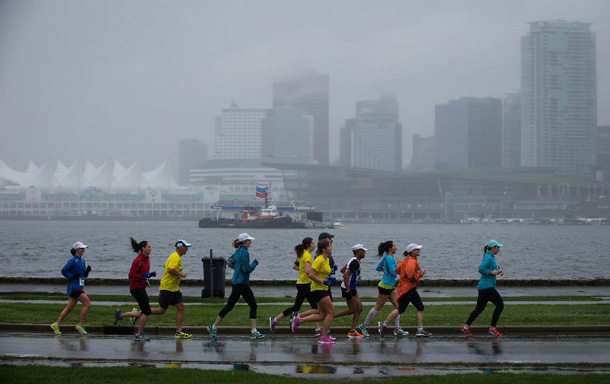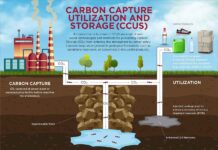

But the Pacific coastal city is pushing ahead toward ambitious carbon goals “regardless of who the next mayor is”
By Gregory Scruggs
SEATTLE – (Thomson Reuters Foundation) – When Vancouver Mayor Gregor Robertson campaigned for his job in 2008, he made a bold promise: To make Vancouver the greenest city in the world by 2020.
Canada’s third-largest metropolis would grab the environmental crown by cutting car travel, enforcing stricter building codes and promoting renewable energy, he said.
But as Robertson prepares to step down after three terms as mayor, following elections Saturday, Vancouver – like many green-leaning cities around the world – is still struggling to achieve as much as it had hoped, though it has made big strides.
“Overall we’re seeing very good results across the greenest city targets and excellent progress heading towards 2020 – but there are a few that are lagging,” Robertson admitted, in an interview with the Thomson Reuters Foundation.
Vancouver is one of more than 70 cities worldwide that have pledged to become “carbon neutral” by 2050, meaning they will produce no more climate-changing emissions than they can offset, such as by planting carbon-absorbing trees.
Each is going about achieving the goal in its own way. But because cities account for about three-quarters of carbon dioxide emissions, according to the United Nations, and consume more than two-thirds of the world’s energy, whether they succeed or fail will have a huge impact on whether the world’s climate goals are met.

LOW AND HEADING LOWER
One of Vancouver’s climate aims has been particularly ambitious: A cut in greenhouse gas emissions of 33 percent by 2020, from a 2007 baseline.
Just two years from the deadline, that target remains elusive, however.
An October 2017 internal report to Vancouver city council suggested that 2023 would be the earliest the city could reach that goal if it followed the most aggressive climate action of three scenarios presented.
“Unfortunately, we do not see a realistic pathway to meeting Vancouver’s climate target for 2020,” the report concluded.
In an interview at the Global Climate Action Summit in San Francisco last month, Robertson attributed the city’s stubbornly high greenhouse gas emissions to two consecutive cold winters during which residents burned more natural gas than normal.
But Vancouver already has done much more than most cities to cut climate-changing emissions, he noted.
“Reducing our emissions is important but we’re starting from being the lowest greenhouse gas emissions per person in North America,” Robertson said.
“The reductions are getting more difficult as we get lower and lower,” he said.
Despite those diminishing returns, the Pacific coastal city is pushing ahead, and now targeting buildings, which account for 57 percent of the city’s emissions as they are heated, cooled and lit.
In 2016, the city adopted a plan that calls for all new buildings to generate more energy than they use by 2030.
“We have the most aggressive strategy in North America to reduce emissions from our buildings,” Robertson said.
The city has made faster progress than expected on some of its other 14 green goals. The aim to ensure more than half of all city trips are taken by bicycle, public transport or on foot, for instance, was hit in 2015, five years ahead of schedule.
Such progress makes Robertson confident Vancouver is still in the running for the greenest city title.
“Across the greenest city targets, we’re well positioned to make it to number one by 2020,” said the mayor, who is finishing his third term in office, having decided not to run again.

THE COMPETITION
To claim the greenest city in the world title, however, Vancouver must beat tough global competition, particularly from cities in Europe.
“Scandinavian cities like Oslo, Stockholm, and Copenhagen set a fierce pace with very low climate emissions and significant success on comparable targets,” Robertson admitted.
“But we’ve made great progress” toward the goal too, he said.
Keeping green goals at the forefront of Vancouver politics may be difficult, however. In the current election campaign, housing issues have dominated, Robertson said.
“Affordable housing is the number one challenge for Vancouver, given global capital (investment) and fantastic job growth that has made the city more expensive,” the mayor said.
But as demand for housing surges, ensuring new construction is energy-efficient and green can help meet both housing and climate goals, he said.
“Climate and affordable housing will not be fixed in a handful of years,” he said. “What we try to do is connect the dots between these challenges. When we take action to build housing, we build the greenest housing we can.”
“There are ‘triple word scores’ possible here,” he said, alluding to the board game Scrabble. “We have to work hard to land them.”
Robertson remains optimistic that whoever takes over city hall won’t shirk the city’s environmental agenda – not least because it has broad-based public support.
“The Greenest City Action Plan involved over 35,000 people,” he said. “That commitment lives on regardless of who the next mayor is.”
(Reporting by Gregory Scruggs; editing by Laurie Goering : (Credit the Thomson Reuters Foundation






